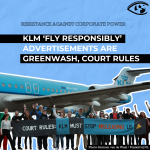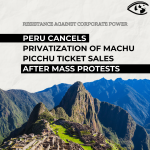MEXICO: Business returns to Mexico City
Mexico
City's commercial real estate market has concluded its busiest year in
recent history, with an oversupply of office space pressing down prices
and enticing companies to relocate, especially to Paseo de la Reforma, the historic boulevard they once fled.
From
the 225-metre Torre Mayor, Latin America's tallest building, to the new
headquarters of HSBC, companies are being drawn to the city's longest
and most important boulevard, which runs from the newly renovated
Historic Center out to the suburb of Santa Fe, its main competitor for
office space.
"This year set a record for leasing and purchasing
of office space," said Pedro Azcué, Latin America director of the real
estate company Jones Lang LaSalle.
"Since the prices are so low,
with vacancy rates above 20 per cent, lots of companies are taking
advantage of the situation to find better and newer office space."
Company
research shows an explosion of transactions in the first half of 2004,
with 309,000 sq m (3.32m sq ft) of Class A office space leased, up 65
per cent over the 186,000 sq m closed during 2003.
Eighteen per
cent was leased on Reforma, which had just 8 per cent of the total
available space, and was until recently feared as a site of crime and
traffic-clogging protests headed to the main Zocalo plaza. This
compares with the 20 per cent leased in Santa Fe, which had 43 per cent
of available space.
Some of these changes can be seen from the
new observation deck on the 59-storey Torre Mayor. Canadian real estate
developer Paul Reichmann envisioned the tower in the 1990s to embody
the free trade explosion in Mexico, but both the economy and the
project were derailed by the 1994 peso devaluation.
Like Mr
Reichmann's Canary Wharf in London and his World Trade Plaza in New
York, the tower is gradually filling. The award-winning building, with
column-free office space and vanguard earthquake technology, has
already attracted international tenants including Hewlett-Packard,
McKinsey and Marsh & McLennan.
US and Canadian investors have
also bought 40 per cent of the equity in the building, said Arturo
Aispuro, vice-president of Reichmann International.
Mr Aispuro
called the 52nd-floor deck "a Christmas present to the city", but
admits it was made possible because the building is only 65 per cent
full.
He notes that the Torre Mayor's 74,000 sq m of office space is nearly double that of most skyscrapers.
Indeed,
HSBC will centralise its operations in the 40,000 sq m of a skyscraper
being built near the Angel of Independence, the most recognisable
monument in Mexico City. The curved white façade of the $137m building
will mimic that of the column on which the golden angel stands, a nod
to the history of Mexico City.
"It is especially significant to be able to have our headquarters on an avenue as important as Paseo de la Reforma,"
said Sandy Flockhart, chief executive of HSBC Mexico, "and we are proud
to contribute to the development of this zone and the surrounding area."
The
bank's move comes after the city invested heavily to remodel Reforma's
sidewalks, lighting and grand boulevard - and offered substantial
property tax abatements.
"Reforma is the heart of the city," said
Ramona I. Perez, an expert in urban history at the National Autonomous
University of Mexico. "And the municipal government would like it also
to be the belly."
Ironically, it was the explosion of office
space in Santa Fe that helped to revive Reforma. In the 1980s, the
suburb drew away company after company fleeing from the centre's crime
and the demonstrations that stopped traffic on Reforma several days a
week.
But the popularity of Santa Fe itself led to daily traffic
jams and to a dramatic overbuilding, forcing down rates to $13-$15 per
sq m per month.
In addition, the lack of urban planning means
that there are daily traffic jams on the two arteries leading there.
Competitive price pressure lowered rates in the city centre to the
mid-20s per sq m, setting off a frenzy of new leasing, as offices move
to lock in attractive rates.
"When they did the master plan, they
didn't create a city. Santa Fe has no public transportation and the
traffic going up there has gotten worse and worse over the years," said
Mr Azcué. "At least on Reforma, the demonstrations aren't daily and you
can walk to restaurants."
- 191 Tourism & Real Estate



